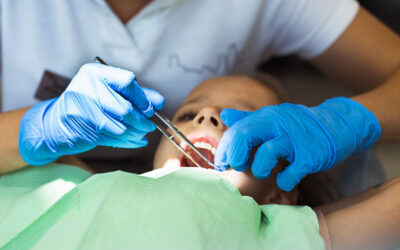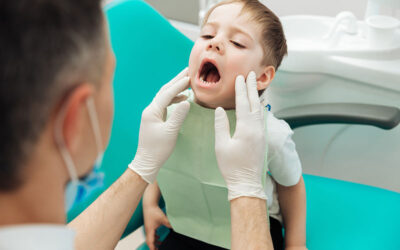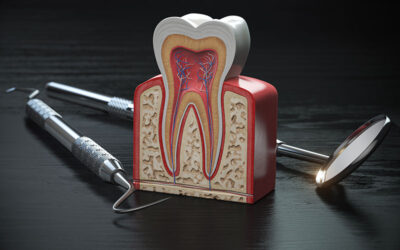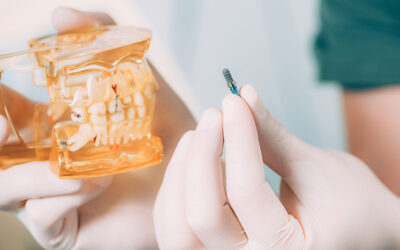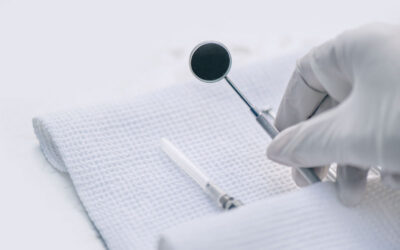Kesklinna Hambakliinik services
Root canal treatment
Root canal treatment Root canal treatment helps to save the teeth where the dental pulp is dead. Lack of circulation in dead pulp means that it also lacks the antibodies produced in the body. Such dental cavities and nerve canals usually contain bacteria; therefore,...
Children’s dentistry
A child's first contact with dentistry should be as early as possible to ensure that the child gets used to the environment and is not afraid of dentists. Deciduous teeth also need check-ups and treatment, because the overall health of deciduous teeth has a...
Treatment of gum diseases
Treatment of gum diseases consists of removal of different deposits (tartar) from teeth. We use different devices and methods for removal. A bacterial film that grows on the tooth surface causes gum inflammation or gingivitis. The first sign of inflammation is...
Artificial crowns and bridges
Dental crowns made in a dental laboratory are used to replace the natural crown of a damaged tooth. In case of a living tooth, the crown is prepared in order to fit the accordingly filled tooth. If the tooth is dead or extensively damaged, then the crown has to be...
Dentures
The types of dentures may be divided into two larger groups: fixed and removable dentures. Additionally it is possible to make combined dentures where only part of the denture is removable. Removable partial dentures can be taken out of the mouth. This type of denture...
General dentistry
Dentistry - dental treatment with different fillings (amalgam, composite and glass ionomer fillings) as well as root canal therapy. The most durable fillings are made from cast gold or ceramic materials (porcelain) and are produced in a dental laboratory. Gold is the...
FAQ
Here we have collected the most common and frequently asked questions and answers
How do dental cavities appear and what is dental caries?
The main causal agent of dental cavities is the most widespread infectious disease in the world – dental caries – that is caused by microbes that live in the plaque. Plaque is a thin layer of food particles, salivary components and bacteria attached to a dental surface. The destruction of tooth enamel is associated with the bacterial metabolism or actual metabolic end-products that cause acidification of the tooth surface environment.
Infection with bacteria that cause caries mostly happens by means of a soother or a spoon that has been in the mouth of the infant’s mother or some other close person. It is also possible to transmit these bacteria by mouth-to-mouth kissing.
Why does caries develop and where does the expression “I was born with weak teeth” come from?
Caries development is associated with several important aspects. If the infection with caries bacteria has already occurred, then the subsequent activeness of the caries is determined by the amount of these microbes living in the oral cavity and the living conditions we offer them. It is erroneous to think that dental problems are hereditary or that teeth are simply “weak.” Nevertheless, body’s general state of health is related to dental health in certain ways, mainly considering the metabolism of the so-called dental bone (or availability of required substances), composition of saliva and speed of its discharge. Still, mostly the reasons have to do with our own health behaviour or lack of behavioural habits.
Can a dental cavity heal spontaneously?
Caries may spontaneously heal or resolve in its initial stage when the salts from enamel are first dissolved into saliva during meals (=acid attack) and thereafter precipitate again onto the dental surface. As a result the enamel damage may heal (=remineralise) in the initial stages. Remineralisation of enamel damage is strongly associated with fluoride that most toothpastes contain. Also, special fluoride varnishes are available – these varnishes contain a higher percentage of fluoride and their remineralising effect is better.
What happens to untreated dental cavities?
Once a dental caries has destroyed the enamel, the process becomes irreversible and spontaneous healing is no more possible. Initially, the tooth may look healthy because dental enamel is more durable than dentin or the so-called “dental bone” that gradually softens and decays. The more time has passed since breaching the enamel, the more damage is done to the tooth, resulting in the involvement of a dental cavity where the dental nerves and blood vessels are situated. Subsequently, inflammation develops that may lead to severe and persisting dental pain or no pain at all. Dental cavity inflammation usually causes irreversible damage that leads to a dead tooth.
Dentin softening is preceded by the decay of enamel in dental caries. Tooth enamel is more durable than dentin; therefore, caries often develops unnoticed and a small cavity may actually mean much more extensive damage.
All the above-mentioned is the main reason for regular dental check-ups, because it is possible to ensure early detection and immediate treatment of cavities with the help of a dentist. This way it is also possible to avoid toothaches and save on your treatment budget.
Very frequently caries develops in the interdental area that is more difficult to clean.
If a toothache is already present, then the conventional filling technique may turn out to be impossible due to dental inflammation or pulpitis that has already developed. In this case the two possible options are root canal treatment or even tooth extraction.
Do I have to brush my teeth before or after the meal?
It is important to brush your teeth twice daily in the morning as well as in the evening. If the brushing technique is correct, then it does not matter whether you do it before or after the meal. The only exception is that it is not recommended to brush after drinking sour drinks and eating fruit.
Which toothpaste is best?
Scientific research has not shown any toothpaste to be significantly more effective than others. The mechanical brushing (and removal of plaque) of teeth and interdental spaces is a far more important aspect in dental cleaning than any toothpaste. Although toothpastes are divided into basic, therapeutic and cosmetic categories, the most important requirement is still fluoride content sufficient to prevent caries. Therefore, toothpaste with at least 0.1% fluoride is recommended. Such toothpaste should be used in small amounts on the toothbrush and can also be recommended for use in smaller children. It is not recommended to use whitening toothpastes for an extended period of time, because their effect is mostly based on abrasive substances and it is not possible to whiten teeth more than the natural colour of the teeth actually is.
Does mouthwash replace brushing?
Mouthwash fluids are meant for removing food particles from teeth and especially from surfaces of devices that interfere with oral hygiene (e.g. braces). Mouthwash fluids are used as an ancillary method and do not replace the mechanical cleaning of teeth. In certain cases (for example, gum diseases and the diseases of attachment tissues (periodontitis)), therapeutic mouthwash is used in order to reduce the number of bacteria in mouth.
Corsodyl with chlorhexidine is a therapeutic mouthwash fluid. Therapeutic rinsing liquids may be bought in pharmacies over-the-counter, but it should be kept in mind that these liquids do not provide treatment for gum diseases. This liquid is only meant as a supportive agent in gingival therapy.
What should I do to prevent tooth cavities?
In order to prevent caries, it is required to shorten the time of enamel erosion (=acid attack) and decrease the frequency of it as much as possible. To do this, one needs to reduce the number of daily meals and avoid snacks between meals. Using a xylitol-containing chewing gum immediately after finishing your meal also helps to shorten the acid attack. Acid attack is not possible without plaque! Therefore your part should be done if you follow this advice:
- brush your teeth twice daily using a fluoride-containing toothpaste
- clean the contact surfaces of your teeth with dental floss or other ancillary equipment
- eat healthy foods and avoid snacks between meals
- ask your dentist whether (and in what form) you need fluoride to strengthen your teeth
- visit your dentist regularly for professional dental cleaning and oral health checks
Is it important which toothbrush to use and how often should I change them?
Colour and design are not the most important features of a toothbrush, although it would be good if its size and shape were chosen based on the need to clean all tooth surfaces, including those of the rearmost teeth. The important feature of a toothbrush is the properties of its bristles. Toothbrushes with excessively hard bristles (marked HARD and MEDIUM) cause damage to dental necks and the gum; therefore, a soft (marked SOFT) toothbrush with synthetic bristles should be chosen.
The toothbrush should be changed at least every 2-4 months or even sooner once the bristles start drooping. You should also pay attention to the shape of the bristle tips. Rough-cut bristles cause more damage to the enamel than round-tipped or specially treated bristles do.
The shape, size, design of the hand grip or bristles is not very important. It is the properties of bristles that matters. We advise you to use a toothbrush that is marked SOFT and has specially treated synthetic bristles. TOOTHBRUSHES SHOULD BE CHANGED EVERY 3 MONTHS.
Is the electric toothbrush better than a regular one?
Definitely not. The electrical toothbrush may be more convenient to use, but the teeth have to be cleaned one by one and the time required for cleaning one tooth has to be sufficiently long. The advantage of an electrical toothbrush is its high brushing frequency that is useful for removing dental plaque that is difficult to access; it is also advisable to use for elderly people whose manual capabilities may be too limited to use a regular toothbrush. As a matter of fact, any brushing is better than nothing, but it’s important to know that an electric toothbrush does not do miracles and that the wrong technique with offhand brushing may yield incomplete cleaning results or damage to gums and dental necks.
What is the best way to brush my teeth?
Proper brushing and cleaning of interdental spaces with floss or other ancillary equipment removes dental plaque from the tooth surface. It is important that all dental surfaces get cleaned. The best way to do this is to develop a certain habitual system so as to leave no areas without attention. Due to the fact that caries damage frequently starts from interdental spaces it is very important to clean these spaces too. Hold your brush as a pencil in order to avoid excessive pressure. The bristles should be at a 45˚ angle to the teeth and gum line, and use a short and fast back-and-forth motion when brushing. Plaque is more firmly attached on the tongue side; therefore, it is recommended to start brushing from the inside. The tongue should also be cleaned. The time required for brushing is at least three minutes, but the quality of brushing is even more important – take your time for brushing! Excessively fast brushing and improper techniques may even be harmful – first, the gum may recede from the dental neck and later, the root cement that protects the dental root may be brushed away. Fast wearing of enamel is also sped up by an acidic environment present when eating sour fruit and drinking juice before brushing.
The internal surfaces of teeth are the least accessible and therefore need special attention while brushing. If you doubt your technique, take your brush to your dentist and ask him to instruct you.
Guide the floss below the gum line while maintaining contact with the tooth and clean it using an up-and-down motion. The same procedure should be done on the adjacent tooth. Gum bleeding that may occur is suggestive of gum inflammation and improper techniques. Bleeding disappears after some time, provided that you use proper cleaning techniques.
Wider interdental spaces and fixed dentures may be cleaned with a special interdental brush.
Ask your dentist for advice when choosing an interdental brush.

